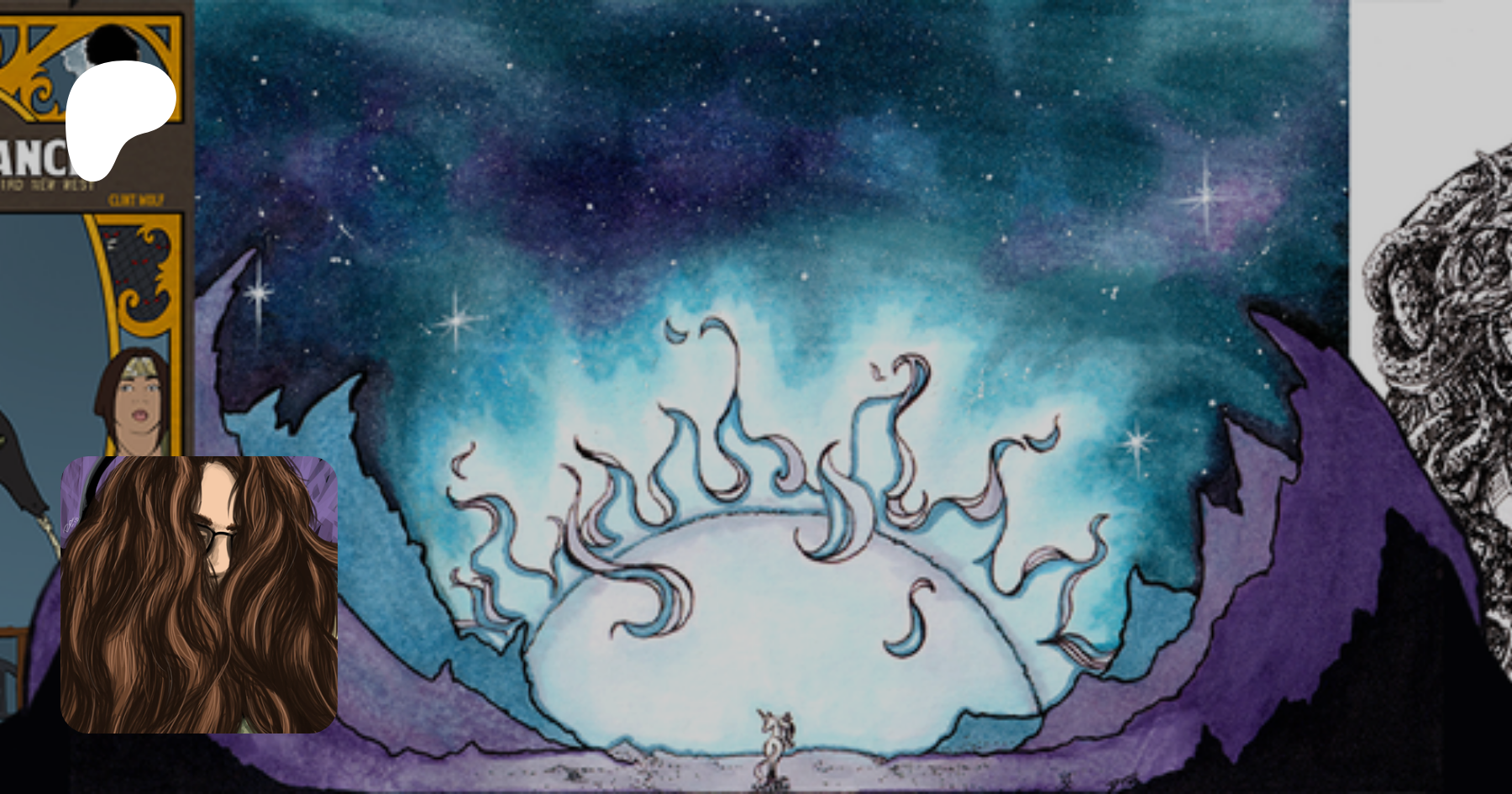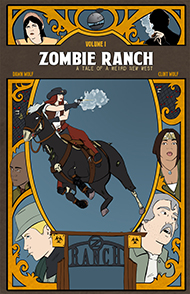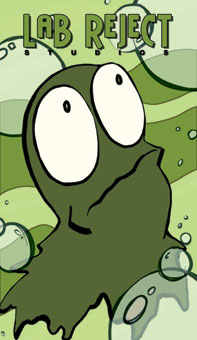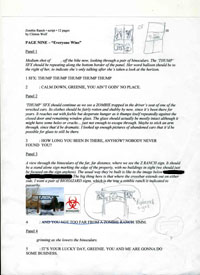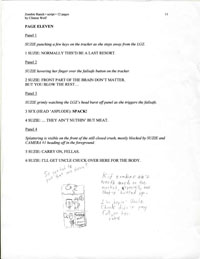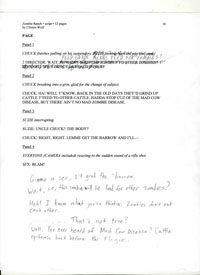One of the things about San Diego Comic-Con is how drained it can leave you when it’s finally over. It takes awhile to adjust back to reality and the idea that you need to go do that day job again that pays the bills. Sometimes this adjustment overlaps with you being at said day job, which leaves you going through the motions in a bit of a surreal, distracted manner.
Every year, a portion of me wants the convention to go on and on, and the other portion of me (I suspect the one in charge of feet and finances) is quite happy to stop once Sunday rolls around. After that, it’s a bit more time before I can really assess how things went… but blog time is upon me, and so I shall try.
This was our first SDCC that Dawn and I attended as “Industry Professionals”, which pretty much just means you stand in a different line to get your badge and that you get the badge for free. That’s nothing to sneeze at when a 4-day badge costs $100, but you don’t get any special privileges beyond that. Heck, the badge border wasn’t even a different color than the ones the Attendees get, and our names were printed so small you wouldn’t really see them without sticking your nose in our chests to read… an awkward social proposition at the best of times.
Everything went smoothly in terms of arrival, badge acquisition, and setting up Dawn’s work for the Art Show. A particularly wonderful change was that the pre-paid parking I bought for us was just as advertised, letting us park next to the Convention Center on Wednesday and find a space within a couple of minutes of entry to the structure, as opposed to previous years where I sometimes trawled the lot for upwards of an hour after being admitted. The downside was that anyone who hadn’t been paying attention to the Comic-Con announcements and didn’t pre-buy was locked out of those lots, but compared to the overstuffing that led to my frustrations of before, well… I’ve got to come down on the side of it being a good thing. A necessary thing. This was the easiest, least stressful arrival we’ve ever had at Comic-Con… which may not be saying much considering some of the hair-tearers of the past, but it was nice to start the visit in a relatively relaxed manner.
With that said, it’s too bad we weren’t allowed to put out our freebie fliers on Wednesday, since Thursday morning was more hectic. I think it’s the first time we’ve had to stand in line to be let in despite already having our badges, and also despite being told we could head up to the freebie area anytime after 8am (security hadn’t gotten that memo, apparently). We finally just joined the general line and got up there with the rest of the crowd, where we turned in our box and watched as the volunteers started putting out the purty Zombie Ranch cards. There wasn’t much else on the table yet, which might explain why we ran into a bit of a problem…
The fliers were all gone by 4pm the same day. I was half afraid we’d been disapproved for some reason, but the man in charge of the table assured us that wasn’t so. Still, I don’t know even now whether I should be elated or disappointed. We were told there was a limit of 2000 pieces for the entire show, and the staff would take care of distributing them. I thought this meant they would make sure to only put out a certain number per day, but apparently they just put out all 1000 we had on day 1, and poof, they were gone. So anyone waiting until Friday, Saturday, or Sunday to check the table, or only attending for one of those days, never saw any of them.
I honestly don’t know how 2000 is supposed to last the whole Con when 1000 goes that fast. Maybe I misunderstood and it’s a limit of 2000 pieces per day? I don’t know. If any freebie table vets happen to be reading this, feel free to enlighten me. I also now wish I’d cooked up some way to tell how many people might be finding us as a result of the flyers. I’m not seeing any big bump in numbers so far, so either those thousand or so people haven’t had a chance to go through their swag yet or it didn’t work out so well.
Ah well, it doesn’t in any way invalidate the fact that my main missions were accomplished. I got to talk to Scott McCloud! In fact, I even worked up the nerve to offer him a copy of Zombie Ranch #1, which he not only graciously accepted but asked if we would sign it for him (Dawn later accused me of badgering him to let us sign it… it’s not true! He asked!).
I have not been that giddy and nervous in a long, long time. It took all my power not to get hopelessly tongue-tied as Scott signed Making Comics for me, and Kurt Busiek signed my Astro City: Family Album. Dawn took a picture as proof, then it was time for Kurt’s “Spotlight on Kurt Busiek” panel, where he was presented with an Inkpot Award and talked about his works.
Now, that panel was on Thursday morning, but it was still the best panel I attended all convention long. Why? Because Kurt talked about his creative process, especially in regards to Astro City, and it was quite enlightening. Actually… and I know this is going to sound weird… it was comforting. You see, I don’t have every last detail of the Zombie Ranch world mapped out, and sometimes I feel like that makes me a bad writer. So when I hear a very established, critically-acclaimed writer like Mr. Busiek saying that he still to this day is developing the environs and denizens of Astro City, after over 10 years since he started scripting it? Well, that’s a beautiful breath of fresh air for my soul, because I respect his work a lot (and so do the people that have awarded him multiple Eisners!). I’m not winning any Eisners anytime soon, but it does give me faith that a more freewheeling style can still produce powerful and memorable narratives.
Kurt’s description of his process with Astro City was not freewheeling so much as he called it “fractal”, I presume with everything that term implies. For my interpretation, it means that there’s a pattern, but it’s always unfolding, always changing, always expanding. This is something that makes total sense to me, or at least it describes the way I feel most comfortable working. Not complete order, but not complete chaos, either. So sue me if I imagined a bit of connection there… then again, maybe it’s just because Kurt had impeccable dress sense that day with his jeans and floral print shirt.
Also, Kurt at one point not only expressed that Hawkeye is his favorite superhero, but elucidated his take on what makes Hawkeye tick, and it’s an interesting analysis I’ve never heard from anyone else. He could really make something interesting out of the purple archer if he was allowed, but he said he probably never will be, so most likely will have to apply the theories to his Astro City character of Quarrel.
There was a lot more, but the upshot of it is that Scott McCloud and Kurt Busiek are both very gracious, smart, and thoughtful men, and I was rapt with attention for that whole hour listening to them talk (Scott was moderating the panel). Brent Anderson, Astro City’s artist, was also in attendance and chiming in with that side of the perspective, much to Dawn’s occasional amusement. But basically, that day I felt I had chosen my heroes well.
Oh, and Astro City is apparently going to be developed as a movie! We heard it there first. Kurt is writing a draft and seems to have a good rapport with the production company as to what Astro City is all about, which in very simple terms is that it’s a study of people who just happen to be superheroes or affected by them. Characters first, SFX second.
So, where was I? Oh yes, Comic-Con. Honestly, I think Kurt’s panel was the high point for me, although that doesn’t mean the rest was bad. We connected with a lot of friends, both those who were exhibiting and those who weren’t, saw sneak previews, got lots of swag and good deals. Since we didn’t have an exhibit space this year I decided to do a “portable booth” and carried several copies of Zombie Ranch #1 in my backpack, along with a handful of fliers and pens… really a just-in-case deal, but we actually had several people purchase or barter for copies! In particular it was fun to be able to provide copies to some of the friends we’ve met at previous Cons that have given us advice and support, such as Cari Corene of Toilet Genie or Rebecca Hicks of Little Vampires. Both of them seemed certain that we could get into the Small Press Pavilion next year if we tried for it. Mind you, longtime readers will know we did try (and fail) to get in for this year, but then again all we had for that deadline was the mini-comic. Will having a full comic be the magic entry key? I don’t know, we turned in our application while still at the con and it was stamped ‘WAIT LIST’. So I’m not holding my breath.
Anyhow, I think that’s enough rambling for this week. Perhaps I’ll have some more Comic-Con thoughts and remembrances later once my brain has more time to percolate. For now, I hope you enjoy the reintroduction of our mystery motorcycle lady, and we’ll see you next week!
